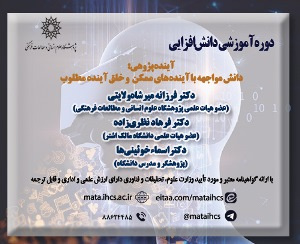رویکرد امنیت گرایانه سیاست جنایی ایران در قبال جرایم اقتصادی؛ مبانی و مصادیق (مقاله علمی وزارت علوم)
درجه علمی: نشریه علمی (وزارت علوم)
آرشیو
چکیده
سیاست جنایی برای پاسخ دهی به پدیده ی بزهکاری، اصول و روش هایی را اتخاذ می کند که بر این اساس اهداف و دورنمای کلی آن مشخص می گردد. امروزه به دنبال نقض گسترده ی امنیت اقتصادی دولت ها و شهروندان در پی گسترش ارتکاب جرایم اقتصادی خصوصاً جرایم بین المللی و سازمان یافته ی اقتصادی و آسیب شدیدی که این جرایم به امنیت اقتصادی و بعضاً به امنیت سیاسی جامعه وارد می آورد رویکرد سیاست جنایی از اصلاح و بازپروری بزهکاران اقتصادی و به تعبیری دیگر بزهکارمداری به سمت نگرش امنیت مداری تغییر یافته است. در پی تبدیل تأمین امنیت اقتصادی به یکی از چالش های اصلی سیاست جنایی به-ویژه با تشکیل گروه های سازمان یافته مجرمانه، اصول و قواعد مربوط به جرم انگاری، مسئولیت کیفری و تعیین ضمانت اجراهای قانونی و تحمیل آن بر بزهکاران این عرصه نیز تغییر یافته و مبتنی بر سیاست جنایی امنیت گرا، به نوعی با فرض دشمن دانستن بزهکاران، حقوق کیفری دشمن مدار در این حوزه را حاکم نموده است. البته از رهگذر حاکمیت سیاست جنایی امنیت گرا در حوزه جرایم اقتصادی آسیب هایی نیز به نظام اقتصادی کشور وارد می شود که منجر به افزایش هزینه ی مبارزه با این جرایم می گردد. بدین سان، در نوشتار حاضر ضمن بررسی دیدگاه نظام قانون گذاری ایران به جرم اقتصادی از حیث تعریف و مصادیق، زمینه های شکل گیری رویکرد امنیت گرا در واکنش به این جرایم و برخی شاخصه های این رویکرد مورد بررسی قرار خواهد گرفت.Criminal Law Protection of Intellectual Property Rights in Architectural and Engineering Works in Iranian Law
Intellectual property rights are ownership of the works and intellectual efforts of individuals, which, by providing some elements including originality, novelty and innovation, due to the nature of the intellectual work, bring relatively exclusive rights to the creator. Contrary to popular belief, intellectual property is not an absolute right and it can also include the public rights. While analyzing the issue of intellectual property rights in the construction industry as works of art and industry, this article has examined the legal protections in two stages before and after construction and it is based on this opinion that the use of designs and ideas implemented by other engineers does not necessarily mean an infringement of the original creator's rights and is considered as a part of the growing nature of the engineering world. Also, it is concluded that in the absence of a clear legal perspective, at the time of conflict between its material and intellectual rights, at least in the field of engineering and industry, the principle of material ownership prevails and the owner has the right to change the created engineering artifact based on his needs, but the owner of the idea can prevent the attribution of the work to himself and recover his suffered possible or absolute damages, if any. Finally, from the criminal aspect, it is found that violation of intellectual rights is no longer a crime merely related to the private rights of individuals, and it is necessary to identify it as a public crime aligns with the public interest and the social and economic developments. * Associate Professor, Criminal Law & Criminology Dept, Faculty of Law, Shahid Beheshti University, Tehran, Iran. b_shamloo@sbu.ac.i** Assistant Professor, Civil Engineering Dept, Allameh Rafiee Institute of Higher Education, Qazvin, Iran (Corresponding Author) darabpour@gmail.com




